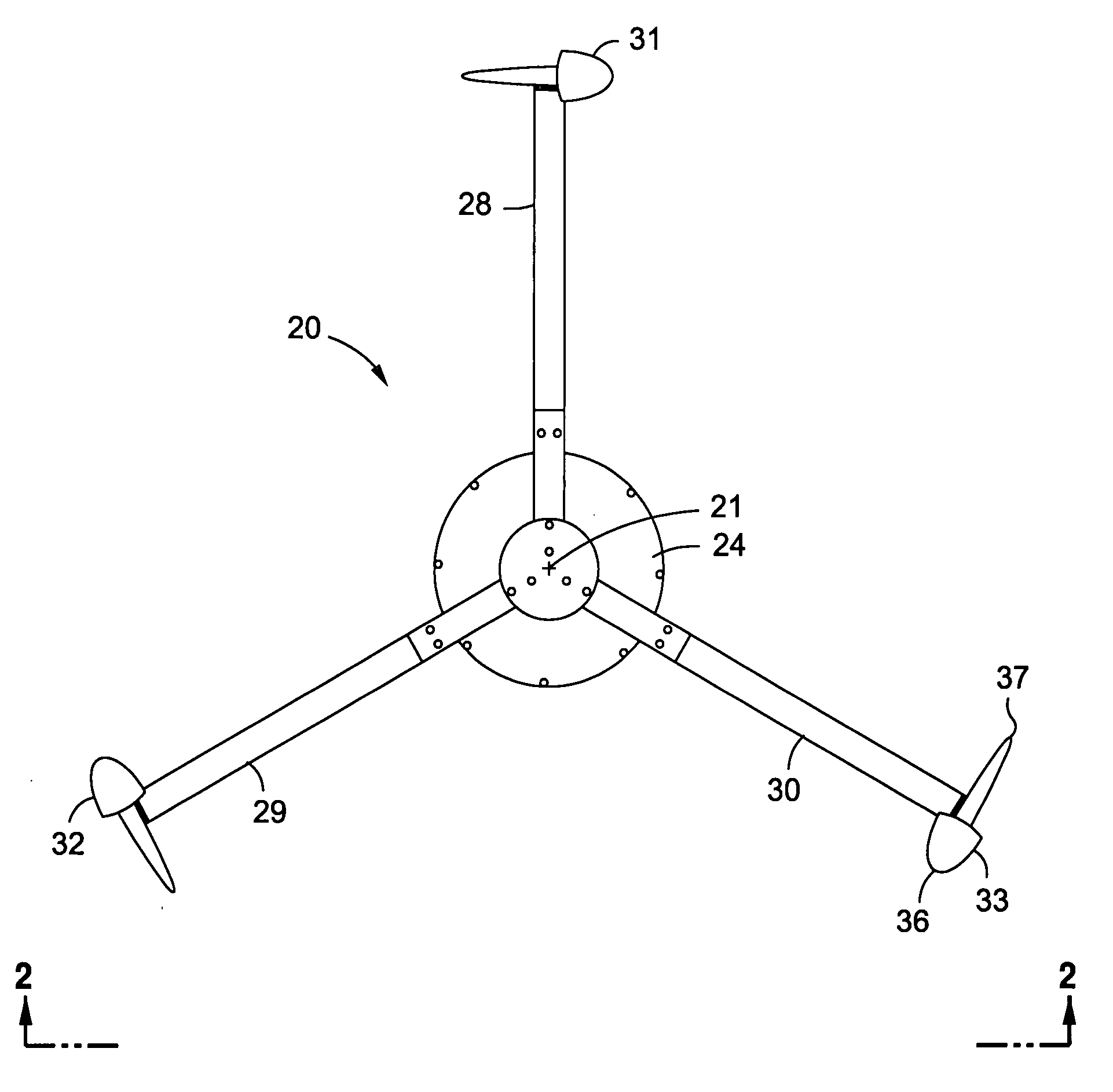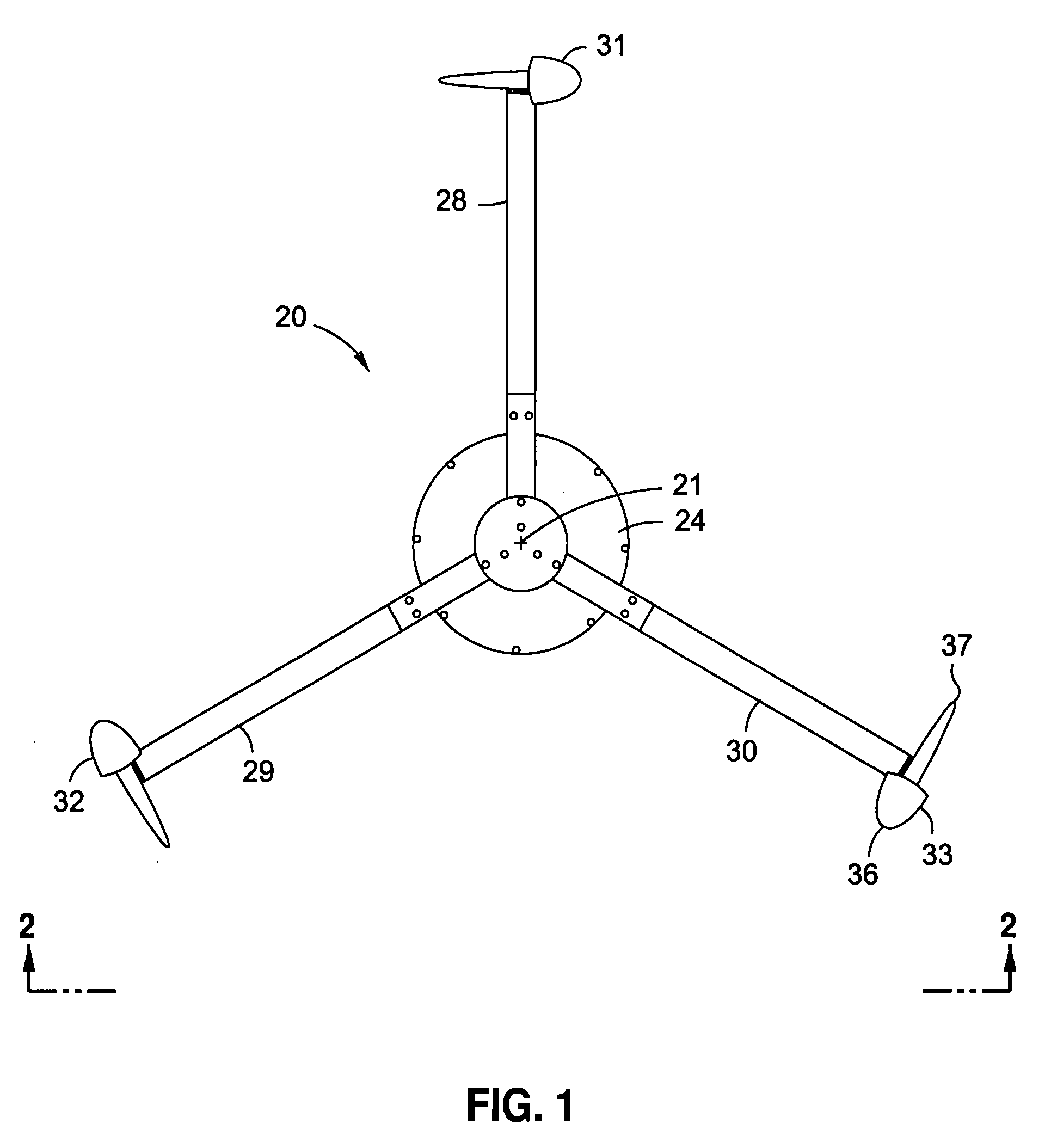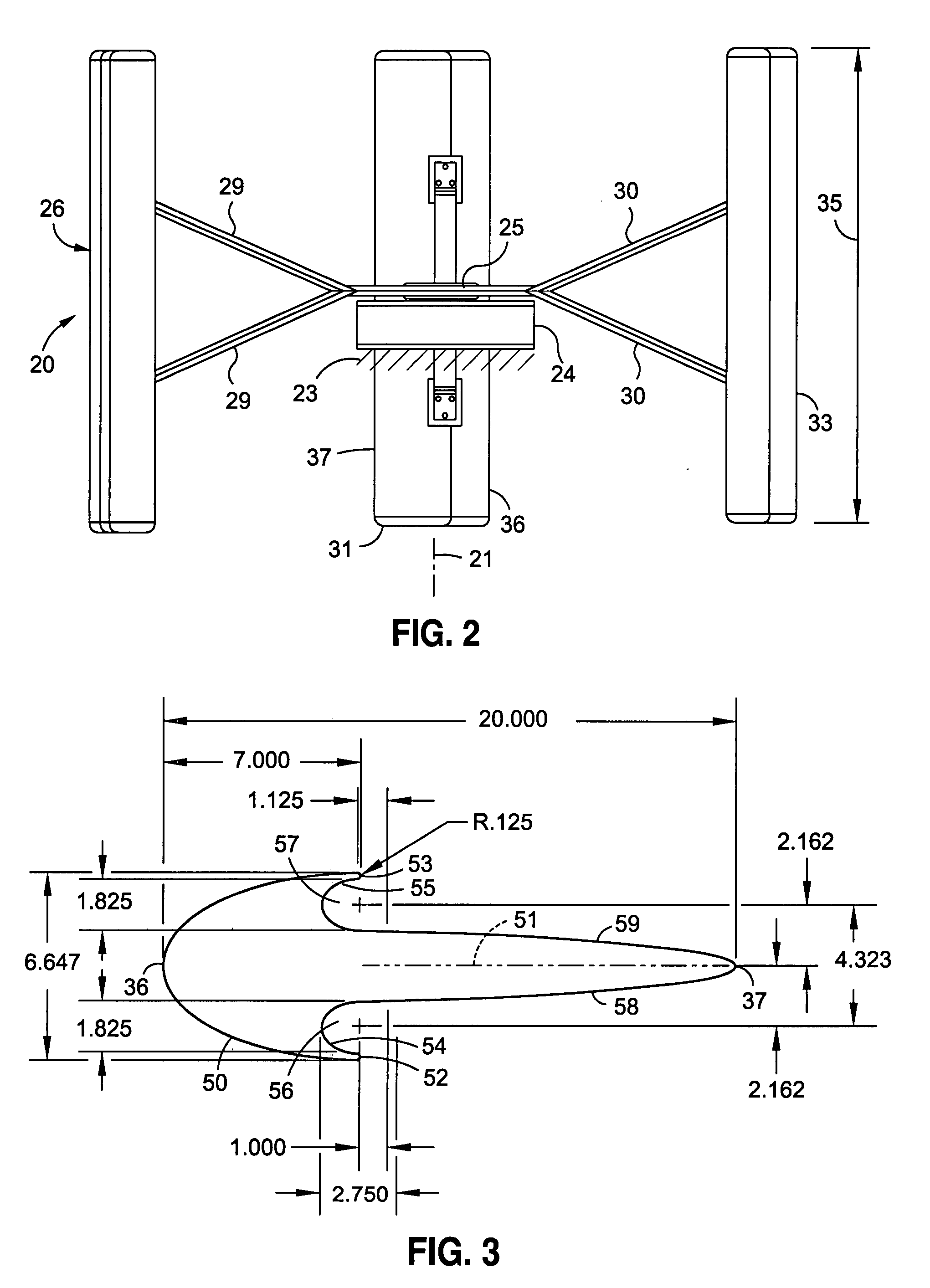Vertical axis omni-directional wind turbine
a wind turbine and vertical axis technology, applied in machines/engines, renewable energy generation, greenhouse gas reduction, etc., can solve the problems of falling into comparative disuse, unable to enjoy the benefits of transmission and generators, and what is suitable for keeping a small water tank full or cattle is ordinarily not enough to power a modern hous
- Summary
- Abstract
- Description
- Claims
- Application Information
AI Technical Summary
Benefits of technology
Problems solved by technology
Method used
Image
Examples
Embodiment Construction
[0019]FIGS. 1 and 2 show a wind turbine 20 with a central axis of rotation 21 intended to stand vertically. As an example of its simplest and preferred structure, it is supported on a base 23 to which generator 24 is mounted. A bearing 25 supports rotor 26 and is directly connected to the rotor of the schematically-shown electrical generator so rotation of the rotor 26 drives the generator. Bearing 25 mounts two sets of three arms 28, 29, 30 each, one set above the other.
[0020]Vanes 31, 32, 33 are rigidly fixed to the ends of respective arms 28, 29, 30. While a rotor with only two vanes will function, it is subject to undesirable vibrations at some speeds. An odd number of vanes is to be preferred, and is illustrated. Use of odd numbers of vanes improves the starting reliability of the turbine at slower wind speeds.
[0021]The vanes are all identical. Each has a dimension 35 of height, a leading edge 36, and a trailing edge 37. In FIG. 1 the same vane is portrayed in three orientation...
PUM
| Property | Measurement | Unit |
|---|---|---|
| diameter | aaaaa | aaaaa |
| height | aaaaa | aaaaa |
| speed acceleration | aaaaa | aaaaa |
Abstract
Description
Claims
Application Information
 Login to View More
Login to View More - R&D
- Intellectual Property
- Life Sciences
- Materials
- Tech Scout
- Unparalleled Data Quality
- Higher Quality Content
- 60% Fewer Hallucinations
Browse by: Latest US Patents, China's latest patents, Technical Efficacy Thesaurus, Application Domain, Technology Topic, Popular Technical Reports.
© 2025 PatSnap. All rights reserved.Legal|Privacy policy|Modern Slavery Act Transparency Statement|Sitemap|About US| Contact US: help@patsnap.com



